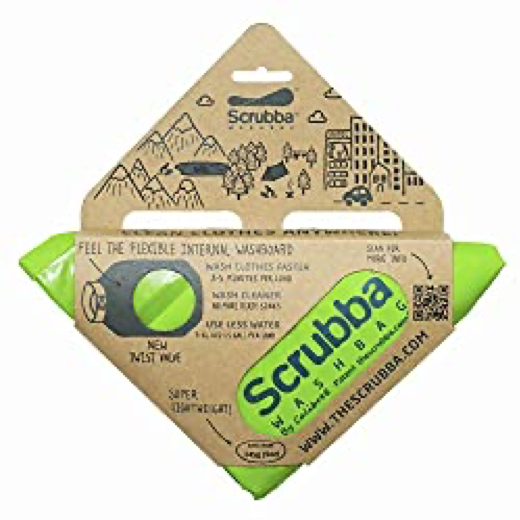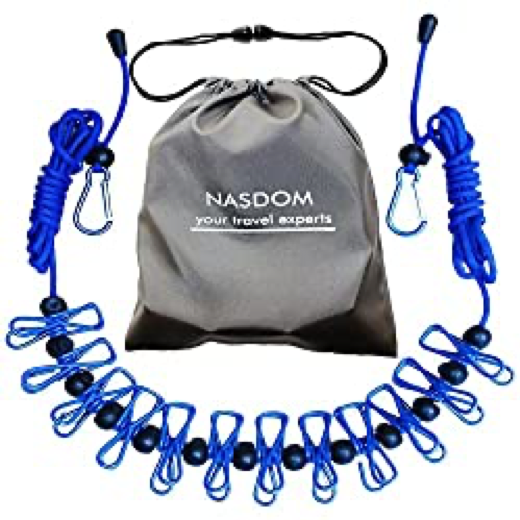How to have clean clothes on the road without overpacking.
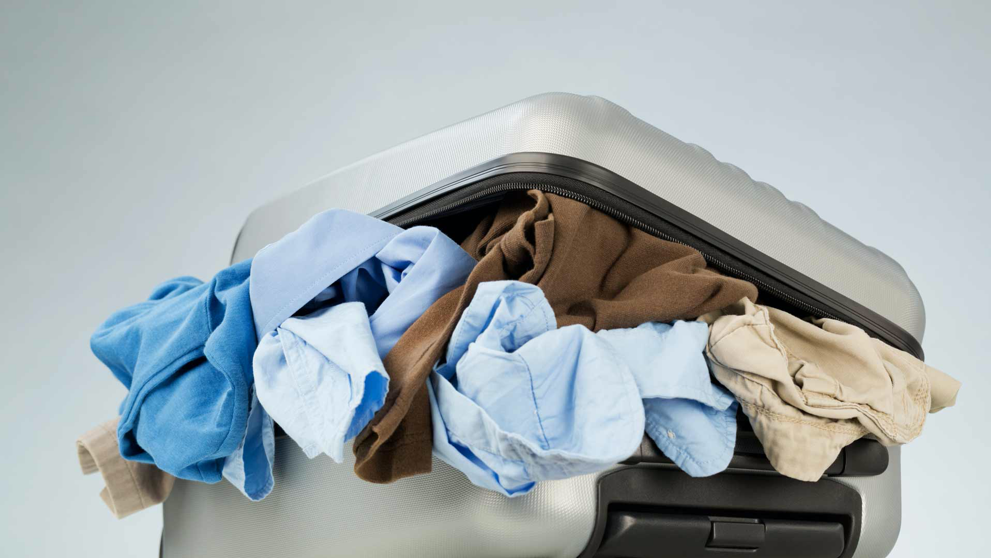
I know some of you pack with the goal of wearing a new clean outfit every day of your trip and never doing laundry on the road. That isn’t possible for me. I usually travel with only carry-on luggage on trips that last at least two weeks. I’d also argue that three or four extra items of clothing are what stands between people who check luggage and those who enjoy cheaper, easier, and less stressful travel with only a carry-on bag. Really.
Think about it: the clothing you pack is different than the other stuff in your bag. While we all bring a few things we don’t really need, odds are you’ll use your tablet or wine opener or phone charger multiple times. Clothing is different: it’s mutually exclusive, meaning the clothes you aren’t wearing are the clothes you have to lug around all day.
You can’t wear three pairs of socks at once (unless you pack really big shoes), or all your t-shirts at the same time (unless you’re in Canada during an unexpected cold snap). Once you wear a pair of underwear a few times, they’re essentially useless until you launder them. Even clean clothing isn’t useful until you actually use it. That dress you wore to dinner on night five is really “the dress you carried around for five days, then wore once.”
In other words, you won’t be using most of the clothing you packed most of the time. When you travel, clothing is a liability, not an asset. How to lighten your load? Bring less, then wear what you brought more often and/or do laundry. Here are several ways to tackle the latter.
Doing the dirty
1. Book a day or two in the middle of your trip in an Airbnb with a washer. (Experience has taught me outside of the USA, dryers are a rarity.) This means I can pack half the clothes I might otherwise, because I’ll double the wear of the ones I bring. Downsizing your suitcase can help save money on bag fees and taxi luggage surcharges, and avoid chiropractor bills. (No back problems from lugging a heavy bag; dirty laundry is dead weight!)
2. If you’re staying at a place for more than one night, offer the housekeeper $20 or whatever is appropriate to take a few things home and wash them. I’ve never been turned down and everything has always come back clean and nicely folded.
3. Use Yelp, Google, and/or the hotel concierge to find a local laundry or dry cleaning place; many will pick up from your hotel. “Wash and fold” places usually charge by the pound, not the piece; prices vary worldwide, but it usually costs less than $15 for all of the clothes in my roller suitcase and they are turned around within 24 hours, so drop off and pick up isn’t a big time suck. You should clarify how you would like your clothes washed. While many times it will be machine washing and drying, in many parts of the world, the default will be hand washing and line drying. I never take my clothes to a self-service laundromat; waiting around for them wastes too much time.
4. Book a night or two in a hotel with laundry facilities. In the USA, these tend to be the longer-stay chains; elsewhere in the world, check the hotel’s website to see if a coin-operated laundry room is listed among its facilities.
5. Bring an Allurette or Scrubba ( a packable washing bag). Throw your clothing into the bag, add soap, fill with hot/warm/cold water, and seal the bag. Shake or mix everything up for a few minutes and then let it soak. Once cleaned, dump the clothing into the sink, then rinse it in the bag or the sink and hang it up to dry.
A clothesline with built-in clothespins is handy, but I usually use hotel hangers.
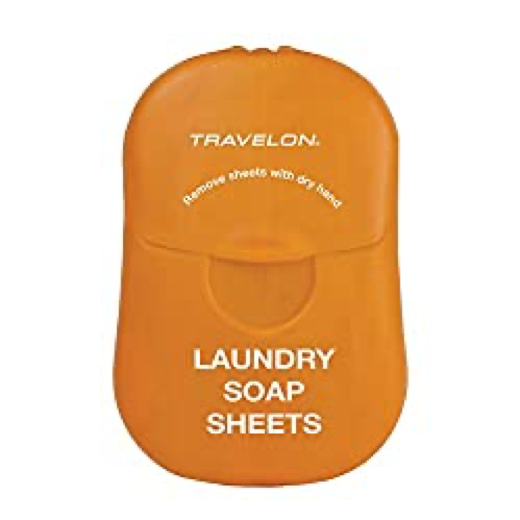
6. Wash items in the sink using either hotel shampoo or a sheet of laundry detergent (while the latter isn’t as effective as liquid soap, it doesn’t leak and isn’t subject to the TSA liquids rule). A universal sink stopper solves the problem of non-watertight drain stoppers, but I usually don’t find this to be a problem (and I’d rather not be weighted down with extra gear like clotheslines, plugs, laundry pods, and the like).
Plug the sink drain, fill the sink with cold or warm water, add soap, then add your clothing. Let everything soak for a while before using your hands to massage and work the material. When you’re done washing, rinse your clothing with clean water. And don’t forget to pack stain remover; the Tide pen and StainRX wipes are my favorites. (The wipes have successfully removed oil, ink, wine, and blood stains. Yes, I’m a messy traveler.)
You can also wash items in the shower instead of the sink. Plug your shower drain, run warm-hot water, strip off your clothes and drop them onto the shower floor under the spray, add soap or hotel shampoo, then get in yourself. Move your feet on your clothes like you’re crushing grapes in France, then rinse each garment under the shower head until the water runs clear.
To dry items, lay them flat on top of one towel, lay a second towel over the first towel (covering your clothing), then roll up both towels, stepping or pushing down hard on each turn. Most things will be almost dry when the towels are unrolled minutes later, and without wrinkles. If you travel with a microfiber towel, use that as one of your roll-up towels and your clothes will dry all the faster. Bathroom heat lamps and a hairdryer also can speed drying along, as can hanging your clothes in the path of the AC or heat (this may require creative use of a clothesline or clip hangers). I don’t recommend using the microwave—my one experiment resulted in a literal “(under)pants on fire” moment.
7. Need to get rid of scuffs on leather shoes? Rub a little hotel body lotion on them, then buff with a dry washcloth.
When you don’t want to get your hands dirty (or wet)
1. Rent clothing. I’ve done this on two trips (I used Rent the Runway and Armoire). It was easy to make my selections and place an order, the stuff showed up on time, I had different outfits for my trip photos, and I didn’t have to clean the clothes before I returned them. BTW, hotels will often rent you workout gear to use during your stay.
2. Send clothes to where you’ll be halfway through your trip, and use the box to return your dirty clothes. Fedex and UPS will ship luggage; the cost isn’t bad if you schedule the pick-up a week before your departure. As an alternative, the company Dufl will do everything for you. You send them your travel clothes and they inventory, photograph, clean, and store them. When it comes time for your next trip, you go to your account on the Dufl website, enter your destination and arrival date, then pack by tapping on the photos of the clothes you’d like to take from your DUFL virtual closet. When you arrive at your destination, your clothes will be waiting for you. Ready to go home? Schedule a pick up online, affix the appropriate shipping label (you can preprint it before you leave home), and leave your bag at the hotel desk.
3. Pack old clothes that can be discarded (I often don a t-shirt good for one last outbound plane ride, then right before landing ditch it in the plane lav and put on a fresh shirt) or donated en route.
4. Buy new while traveling. This doesn’t have to break the bank; I can usually find something fashionable and inexpensive at chains like Zara when in Europe. And reasonably-priced clothing is everywhere in Asia, Africa, and South America. I’m still wearing a $9 pair of elephant-print cotton pants I bought from a stall in Thailand a few years ago.
5. Re-wear things more often than you would at home. Sometimes you can make the same shirt last two to three wears, depending on what activities you’re doing and what the weather is like where you are in the world. Let your nose be your guide; if you can smell your clothes, time for a wash. (If this offends your sensibilities, pretend you’re an astronaut in space; they wear their clothing until it falls apart!)
Most of us have heard of the trick of turning your underwear inside out so you can wear it one more time before washing. (Note: not the most comfortable if it has lace trim.) You can also stretch your underwear usage with thin pantiliners (thong version available); they give you an extra day or two wearing of a pair of undies and don’t take up much space in your luggage.
Consider changing clothes more often, too; if a dress is only needed for, say, three hours at lunch, only wear it for those three hours, then take it off to preserve its cleanliness for another wearing.
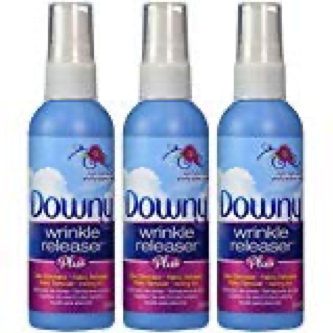
6. Hang clothes in the bathroom when showering to de-wrinkle them, or lay them on the bed and wipe the wrinkles away with a hot, slightly damp washcloth. Sometimes I’ll carry a small bottle of Downy wrinkle-release. (This saved me when I had to pack a ball gown for the opera and two parties and a wetsuit for surfing into the same carry-on, along with my regular clothes.
7. If you check luggage, you can bring a small travel steamer, which takes up less space than a pair of dress shoes. Steaming works wonders on suits and dress shirts, which wastes less water than steaming them with a running shower, and is not as harsh on fabric as a hot iron. It’s faster than ironing as well. (You can use your iron as a steamer, but be sure not to touch the fabric—the bottom of hotel irons is often are gunked up with stuff that can ruin your clothes.) And a spritz from a small bottle of unscented Febreze can remove body odor.
8. And now comes truth time: other than washing a few items in the sink (quick-drying athletic gear, undies), I usually send my stuff to the hotel’s laundry service. This isn’t because I’ve got money to burn—I wince when I see the bill at checkout. But I didn’t spend hundreds of dollars and dozens of hours traveling across the world to save $10 doing laundry for four hours. So send a pair of pants and a shirt or two to the hotel’s laundry service. Yes, it will cost about double what it would at home, but if it frees you up to sightsee/adventure, it’s worth it.
What type of clothing washes (and dries) well?
If you know you’ll be re-wearing items and washing stuff yourself, consider what the clothes you’re bringing are made of.
I’m not a fan of “travel clothing,” like these nylon hiking shirts or zip-off pants. They are pricey, can be too hot and rough against your skin, and they mark you as a tourist (and a sloppy one at that). If you’re not hiking Mont Blanc, Machu Pichu, or Mount Kinabalu, don’t dress like you are. (Note: when I did those things, I still never wore zip-off pants or nylon shirts.)
Cotton breathes well, but dries slowly, stretches after a few hand washes, shrinks after a few too many dryers, and generally wrinkles seconds after you pack it. If you plan on doing laundry on the road, ditch the cotton for polyester, or at least a poly blend.
What to bring that will be good for multiple wearings without needing to be washed?
Start with a pair of jeans. Why? Because no less an authority than the CEO of Levi’s says machine washing your jeans is completely unnecessary. (“A good pair of denim doesn’t really need to be washed in the washing machine except for very infrequently or rarely.”) Other designers agree; most say jeans need only be washed every two to six months (depending on what abuse you put them through). No way can a pair of zip-off pants take a beating for six months. Jeans for the win.
Merino wool is durable, good in any climate, is naturally sweat-wicking and odor-reducing, and holds its shape well under all kinds of wearing and washing conditions. I’m a fan of Icebreaker; this long-sleeved t-shirt has been worn (and washed) in at least fifteen different countries and still looks great.
Pack silk, modal, or nylon undies (available in almost all brands; for men, Husband likes Saxx. Ex Officio underwear is popular among travelers, but I find their material is scratchy and their styles, well, less than cute. If you want to go the travel underwear route, look for wicking (to keep you dry) antimicrobial (no bacteria means they will smell fresh longer) fabric.
Speaking of Ex Officio, they used have a TV commercial that claimed, “17 countries, 6 weeks. One pair of underwear.” I’m more of a fan of “wear one, pack two,” with one of the packed ones possibly still damp from washing.
Twist’s Take: Bring fewer clothes and wash them every now and then, preferably through the hotel’s service, even if it’s pricey. Except for jeans. Those you should just wear until you’re back home again.

